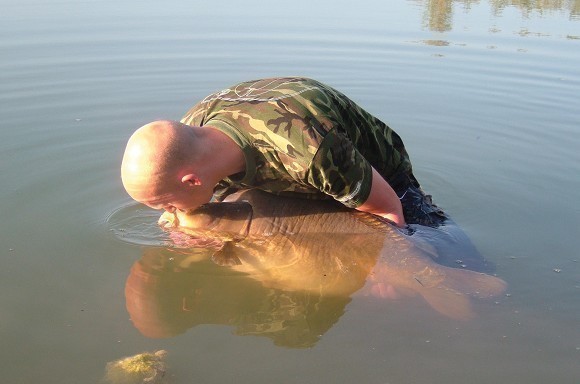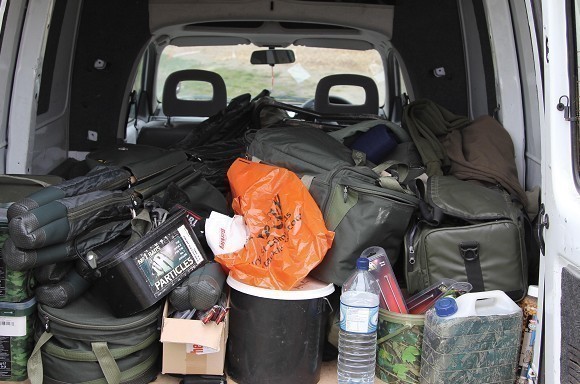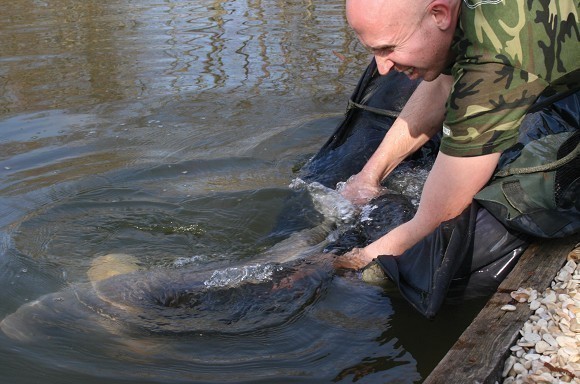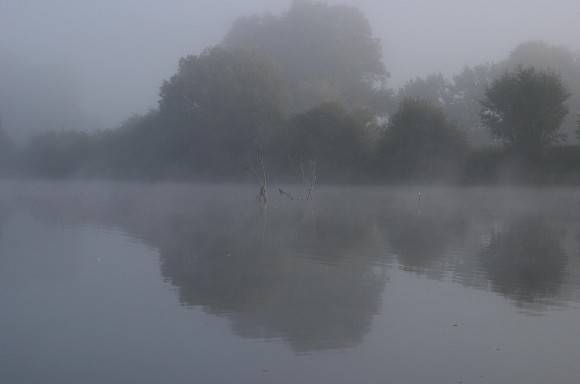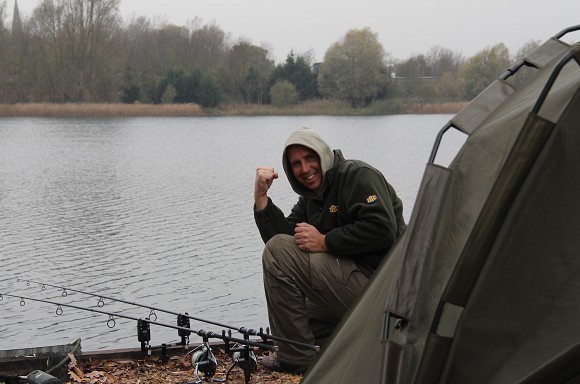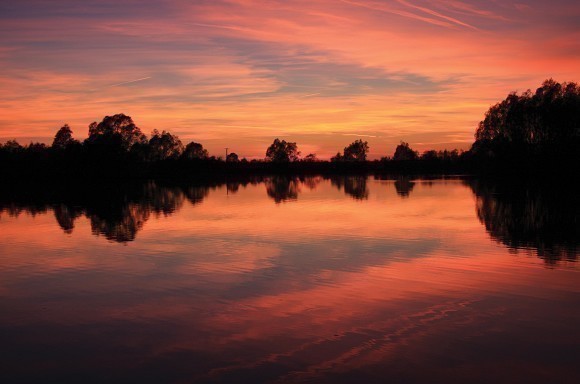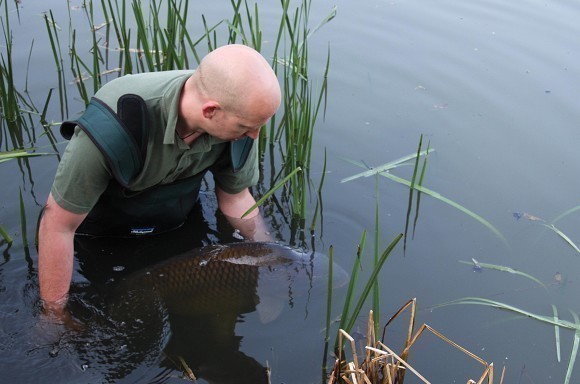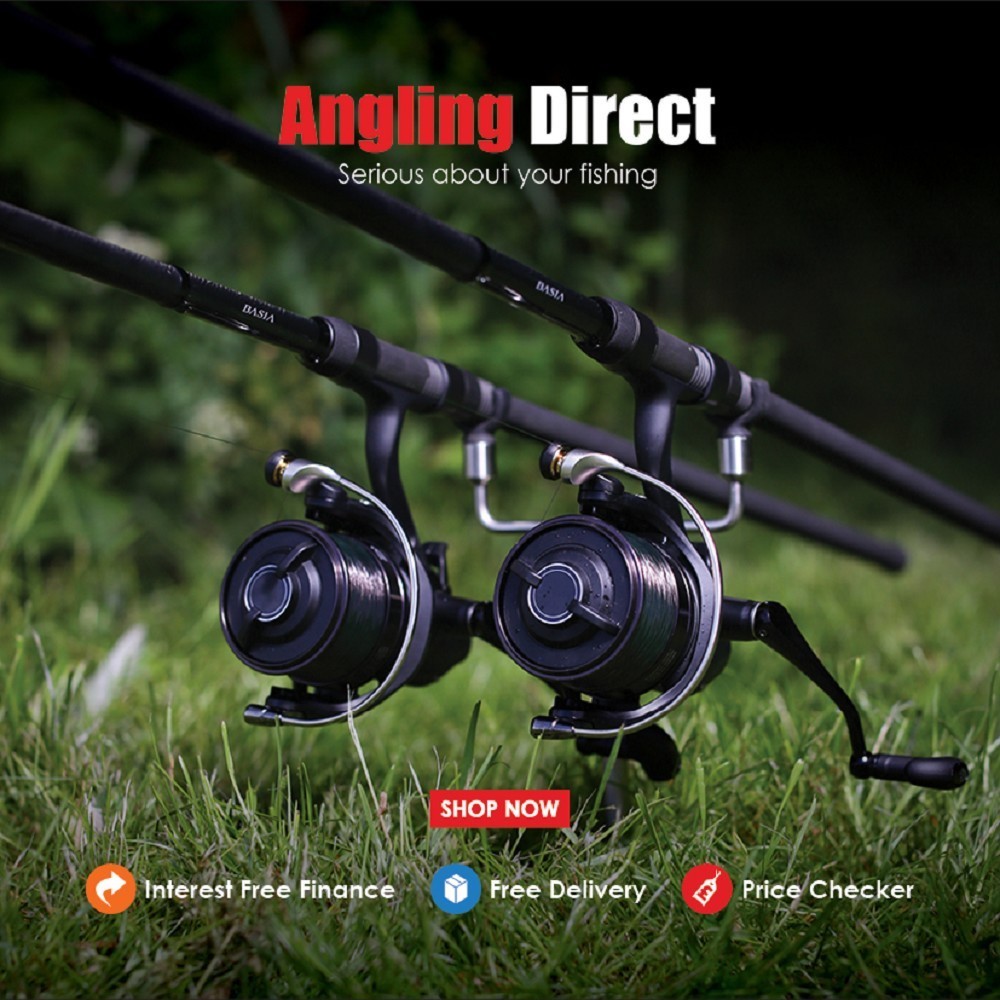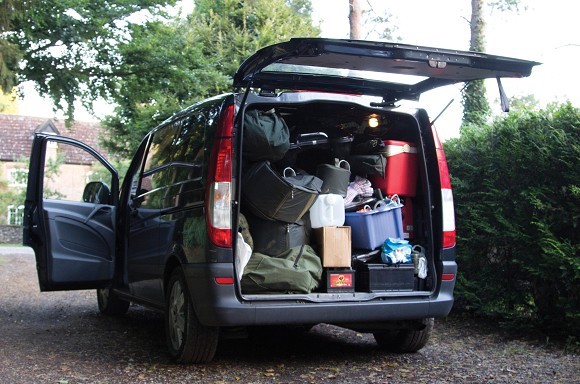
How to make the most of 5 day's fishing
Planning a long weekender? Or a week long trip abroad? Here's James Vincent with some suggestions on how to maximise your 'extended stay' time allowance...
My fishing takes place whenever I can get on the bank and generally consists of overnighters. That said, there are the occasions when the work, personal and practical aspects of my life allow me to ‘session fish’ and making the most of these extended opportunities keeps me hungry for the next extended stay. I tend to be very methodical in my approach to this style of fishing and try to break it down into activities which I find makes the preparation and actual angling trip itself much more manageable.
On so many occasions, as a youngster, I remember turning up for a day on the bank and forgetting my bait or my landing net, worst still, my food for the day, often choosing to eat the bait – luncheon meat, sweetcorn or the fresh loaf of bread that’s been laying on the floor most of the day. These early experiences helped me in my later session fishing where I now take everything I can fit into the van – more bait than you could use in a month let alone a five-day session and plenty of food – I now drive 80 miles and then find I have forgotten my bivvy… DOH!
Too much planning is not a bad thing...
Time spent planning your trip is the key to success and will enhance your stay on the bank. Looking after ourselves while on the bank is very important both nutritionally and physically. My food for the week is mapped out before I start and for the first two evening meals I will normally take a chilli, Bolognese or curry from my frozen food stock of homemade meals. Every couple of months I will make up a big pot of each, freezing twenty or so portions for forthcoming trips. So that’s the first two days sorted. Depending on where I am angling in the country, either the nearby or on-site cafe gets a visit every other day with a delivery from the local take-away for the evening meal if need be. In today’s digital world of smart-phones, numbers are easily obtainable on the bank as long as there is a signal. Most venues have menus at the ready, as take-away delivery on the bank is popular with long-stay anglers.
The decision of when to go has to be made a month or so in advance, I have to book time from work and getting the time I want can sometimes be difficult. The week of the new moon each month is normally what I opt for, as this time has always been very kind to me. The weather also plays a big part and I will keep checking the long-range forecast as my scheduled holiday gets closer. If things are not in my favour on the week running up I will cancel my holiday from work and reschedule. I have only cancelled two weeks in the last two years due to a broken leg and illness so most sessions have gone to plan with a few fish for the effort. In the run up I will check the internet, make calls and if feasible, visit the water getting as much information as I can on recent fish captures, including conditions and bite time.
Carp food
What to take, how to plan and then hot to bait for the long-term
Bait is a huge consideration and getting a decent offering out there can make or break a session. I tend to take far too much bait for any session, but in doing so I will always have enough to ‘let them have it’. The stocking levels of all species needs to be considered as a week’s worth of bait will vary considerably depending on numbers and size of fish present, both target and nuisance. I always have my ‘bucket of specials’ in the back of the van, a big white bucket filled to the brim with a wide variety of hookbaits. If there is space in the vehicle you may as well fill it with something and having different baits to try when the bites just aren’t happening has got me out of trouble and saved a blank a few times. The longer your session, the more chance you have of your rigs being in the water when the fish are feeding, learning the bite times over your extended stay helps to tie in future short session visits. This can also tell you when to rest your swim, which I feel is a major advantage when session fishing over a number of days in the same swim. I do struggle to stay in the same swim for any length of time, especially if I get a sign that tells me to move. That said, moving is not always an option, especially on busy lakes so resting the swim can often work to your advantage, giving fish that false sense of security that your piece of water is free from danger. It’s very difficult to reel in when you’ve had a fish, but the longer sessions teach you the watercraft; the knowledge that at certain times the fish are either not in your swim or just not happy to feed there. Once rested, you need to get your baits back on your likely spots with the minimum of fuss.
I was fishing a lake a few years back and every day at 15:45 I received a take, off a certain spot. I don’t believe the spot held anything food-wise, except what I placed on it, instead being a ‘passing point’ which I will come to shortly. I could have turned up each day and caught from this spot, putting a bait out at the right time, 15:40ish in this instance. Looking further into this, I searched with a marker rod for the area that the fish were travelling to and from. The attraction was some underwater snags on a silty lakebed a few swims down. Moving into this swim and fishing to the snags for the last two days of my session caught me a couple of extra fish. I could still cast over to the ’15:45’ spot from my new swim and had a fish each day from there. Short session fishing could never have told me so much about the ‘passing points’ along the fish’s navigation route.
Swim choice: Where do you start?
This brings me nicely onto my session fishing swim choice or more importantly where to start. Turning up and dropping into the same swim every time is not going to produce fish forever. It does work and fishing in a different way to the other anglers on the water may give you a stay of execution, but it’s not always possible to jump into the same swim and in doing so you are more than likely going to catch the same fish.
When I arrive on any lake, even if I have a good idea where I want to be, I will do a circuit or two looking for any signs of fish, making sure I have a bucket to reserve my swim choice should something obvious occur. If I don’t see signs of fish, more importantly signs of feeding fish, I will then opt for a swim that gives a view of the largest part of the lake that isn’t occupied. I also take lake shape into consideration; if it’s uniform I tend to go for a swim in the middle, so if the fish move either way I’m in with a chance of them coming across and dropping onto my baited area. Even with session fishing, sitting and waiting is not an approach I like as being mobile and on the lookout for fish will always put more on the bank.
Other visible features which contribute to my swim choice are snags, any form of cover and squeeze points. On heavily fished waters I will often go for the overgrown swim that sees very little pressure. It’s plain to see carp will soon move into ‘out-of-bounds’ areas on any lake as they know they are safe, and exactly the same applies for un-fished swims. I used to fish a small lake in Norfolk where the lake consisted of two bodies of water with a very small channel between the two. One body was shallow, 3-5ft with the other side having depths of 7-13ft. The fish would get in the shallower water on the hot days and the deeper water by night or in colder conditions. The ‘Point Swim’ was right on top of this small channel or ‘Squeeze Point’ as I call them with most of the other members that fished the swim casting down the tree-line or out into open water. Thinking outside the box, just an underarm cast 20ft out into the squeeze point was all that was required and accounted for a lot of my fish as they passed back and forth. In the right conditions I knew the fish would pass me at least twice a day and I would be in with a chance even though I had the smallest area of water in comparison to the other swims on the lake.
As I spend more time on the banks of any water and the pieces of the jigsaw come together I will become familiar with the swim’s underwater features. I always carry a marker rod, even on waters I know well, as there is always something that can be learnt. Unless fish are waving the white flag telling me exactly where to put my hookbaits I will lead around with a braided main line until I find a spot for each rod, carefully noting horizon markers for each. Once the spots have been found I will walk each out and place markers ready for clipping up on subsequent recasts. As my memory is not the greatest I jot these down in a notebook as I will chop and change my spots until I get a take. So many times I have watched and laughed with friends as they cast to the wrong mark having forgotten which one they are using at any particular time.
Don't get lazy - work every day
Just because you're there for five days, doesn't mean you don't fish like you would on an overnighter
I treat long sessions in the same way as short overnight sessions by breaking the trip down. While I plan for the week with regards to food and bait, I am still always looking for a quick bite. I remember a very unproductive session on Oakwood Park Lakes, it was raining and nothing much had occurred. Before dejectedly packing I had a look around the carp lake and pinged a couple of oily floaters out. Within minutes a fish started taking them. Not wanting to miss an opportunity I ran back to my swim where I had spent most of the session and grabbed the floater rod. I quickly returned and stealthily flicked out a hookbait, watching as one feeding carp circled on my floater knowing it would take it – and sure enough it did. This fish was the biggest in the lake at the time and an opportunist moment in a long session that had fished rather slowly.
The more time you spend at the lakeside, the more opportunities will come your way, learning the timings and understanding how the weather affects these variables can be a plus side of session fishing. The more time spent learning the way of the water is how you build watercraft, which can then be used in your armoury on other venues. Effectively this is what I am looking for all the time on the bank: opportunities, the longer the session the more of them I expect to come across. CONFIDENCE IS EVERYTHING: we all know that when we are confident so much more can be achieved. Don’t doubt your ability, you have plenty of time to make it happen when session fishing, so aim high and achieve.





